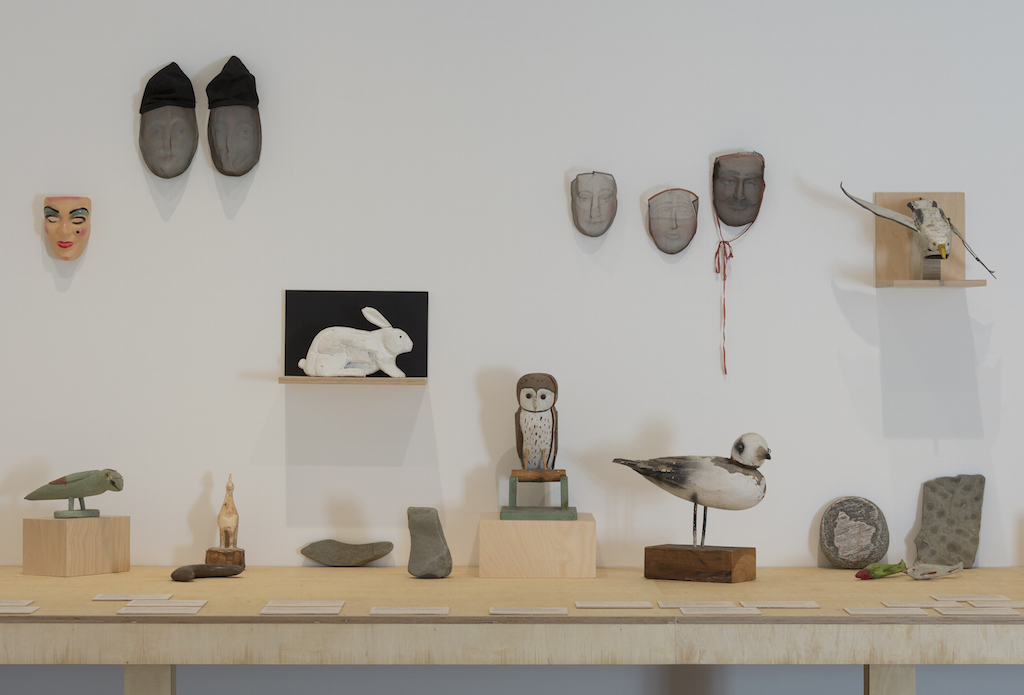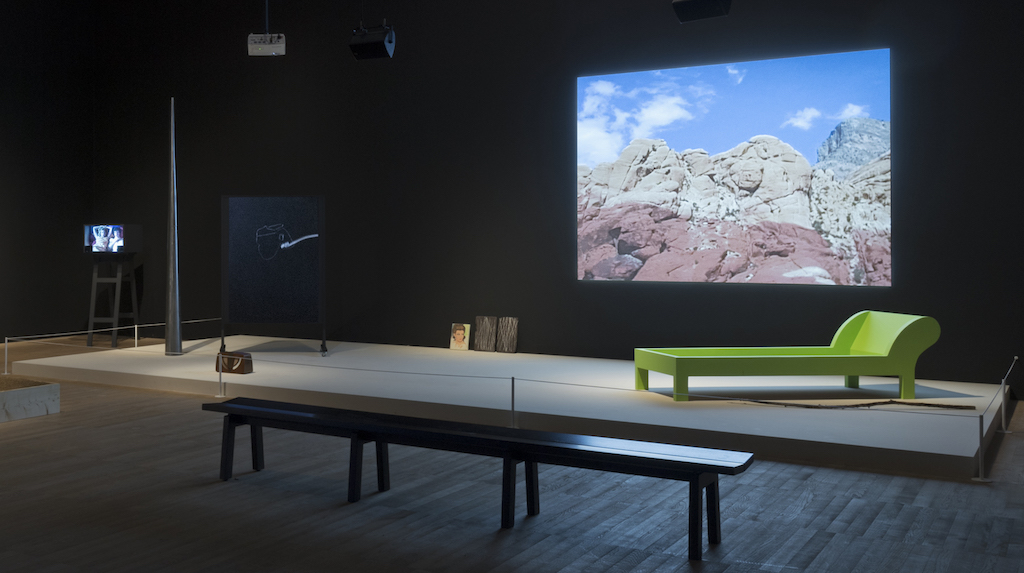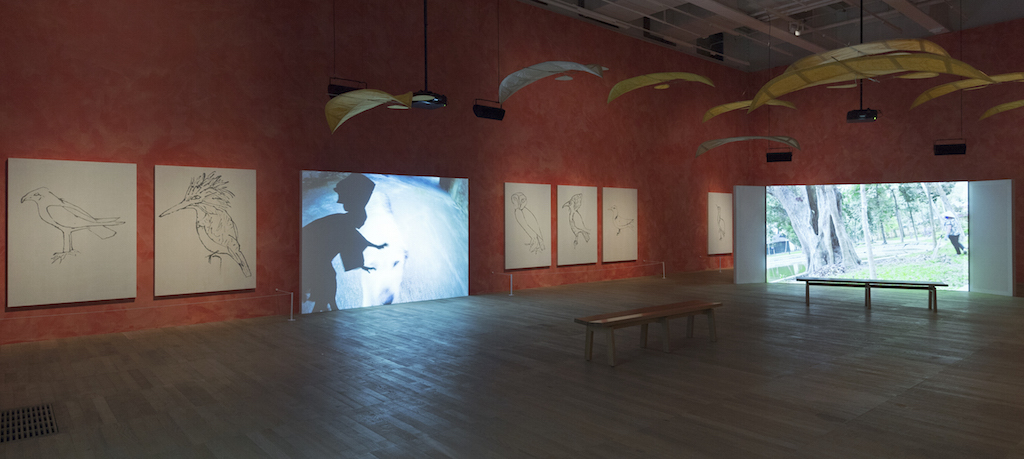The American artist, Joan Jonas is one of the pioneers of performance art. Now 82, she is being honoured with a Tate Modern retrospective and Ten Days Six Nights, a festival of live art in which many of her performances are being recreated.
Traditionally in art, women were allocated the roles of model and muse. Frustrated by such limited options, in the 1960s many courageous women began developing careers as artists in their own right. Many chose performance art because, unlike painting and sculpture, it wasn’t freighted with a history dominated by men. The genre allowed women to negotiate the transition from being seen as objects of desire to being in control of the audience's view of one's body.
In Mirror Check, 1970, for instance, Jonas appeared naked and examined every inch of her body with a hand mirror; but since the audience were positioned 25 feet away, they were unable to see these intimate revelations. In subsequent performances Jonas again used mirrors to frustrate the voyeuristic tendencies of the audience by deflecting their gaze.
In Mirror Piece II, 1970, which is being re-enacted as part of Ten Days Six Nights, a group of performers wearing black shifts enter the space carrying mirrors large enough to obscure most of their bodies. As they move about in formation and manipulate the heavy rectangles, the mirrors divert attention from them by reflecing the surroundings and occasionally the audience. One performer carries a sheet of clear glass, though, through which she is visible. In fact, the glass acts like a frame highlighting her movements. While we watch her, she ignores us to focus her attention on handling the fragile panel. The relationship between performer and audience is complicated once more; any desires we may have for titillation, revelation or even acknowledgement are thwarted.
 By its very nature, performance art is transitory and ephemeral. Little evidence remained of one’s efforts and there was nothing to sell. Artists like Marina Abramović solved the problem by documenting her performances and producing the photographs, films and videos in limited editions that could be sold; meanwhile, Jonas began turning her performances into installations.
By its very nature, performance art is transitory and ephemeral. Little evidence remained of one’s efforts and there was nothing to sell. Artists like Marina Abramović solved the problem by documenting her performances and producing the photographs, films and videos in limited editions that could be sold; meanwhile, Jonas began turning her performances into installations.
The Juniper Tree, 1994 (main picture) is an installation based on a performance from 1976. A beautifully embroidered kimono hangs in the space surrounded by bright red paintings of faces whose vehemence suggests extreme emotion and vigorous action. The only record of the performance is a slide show, which doesn’t fully convey the drama. This static and silent presentation leaves one feeling disappointed that you missed the main event.
Jonas soon began performing directly to camera, often wearing masks and using props (pictured above right), which she includes in her installations as sculptural elements alongside the videos. This would make for a more tangible experience had Jonas not devised myriad ways of loosening the performer/audience relationship by addressing viewers obliquely.  The text for Lines in the Sand, 2002 (pictured above), is drawn from Helen in Egypt, a 20th-century poem by Hilda Doolittle which questions the longstanding belief that Helen was responsible for the Trojan War and concludes that it was actually a trade war. The poem also explores the idea of Helen visiting Egypt. Photographs of the pyramids taken by Jonas’s grandmother on a trip to Egypt in 1910 are juxtaposed with footage of the artist drawing pyramids on a blackboard. Film of a pyramid was taken not in Egypt but Las Vegas, where the Luxor Hotel mimics ancient Egyptian architecture. Egypt, it seems, has become as much an idea as a place and therefore features as a memory, an idea or a pastiche. Helen of Troy is also absent, since her mythic status similarly clouds her historical actuality.
The text for Lines in the Sand, 2002 (pictured above), is drawn from Helen in Egypt, a 20th-century poem by Hilda Doolittle which questions the longstanding belief that Helen was responsible for the Trojan War and concludes that it was actually a trade war. The poem also explores the idea of Helen visiting Egypt. Photographs of the pyramids taken by Jonas’s grandmother on a trip to Egypt in 1910 are juxtaposed with footage of the artist drawing pyramids on a blackboard. Film of a pyramid was taken not in Egypt but Las Vegas, where the Luxor Hotel mimics ancient Egyptian architecture. Egypt, it seems, has become as much an idea as a place and therefore features as a memory, an idea or a pastiche. Helen of Troy is also absent, since her mythic status similarly clouds her historical actuality.
Rarely have men portrayed women as active participants in history, preferring instead to allocate them fanciful, mythic or fictional roles. Jonas’s kaleidoscopic approach reflects this shadowy marginality, yet it is still unsettling; wearing masks and speaking another’s words, she seems almost as intangible as Helen of Troy.
Volcano Saga was originally performed by Jonas. Here it appears as a film featuring Tilda Swinton as Gudrun, a woman from an Icelandic folktale. She tells four dreams to a soothsayer played by Ron Vawter, who interprets them as portents of future marriages. This woman’s fate will be determined by her choice of husbands. Filmed in a New York studio, the actors are juxtaposed with images of Iceland’s rugged landscape; the pair hover weightlessly over rocks and streams, or appear as cut-outs soaking in hot springs. These dreamy encounters have a haunting unreality that leaves one feeling utterly light-headed. Stream or River, Flight or Pattern, 2016/17 (pictured above), is a room-sized installation featuring footage shot in Venice, Cambodia and Vietnam and videos made in Nova Scotia, where Jonas spends her summers. Veils are once more created between viewer and viewed that produce a sense of magical dissociation. The artist becomes a screen for projected images, while others are filmed casting dark shadows across a screen as they interact with the picture. Beautiful images surround and seduce one, but the centre of the space is empty, literally and metaphorically.
Stream or River, Flight or Pattern, 2016/17 (pictured above), is a room-sized installation featuring footage shot in Venice, Cambodia and Vietnam and videos made in Nova Scotia, where Jonas spends her summers. Veils are once more created between viewer and viewed that produce a sense of magical dissociation. The artist becomes a screen for projected images, while others are filmed casting dark shadows across a screen as they interact with the picture. Beautiful images surround and seduce one, but the centre of the space is empty, literally and metaphorically.
Joan Jonas is visible everywhere in her work, yet she contrives to disguise her presence. Her installations are kaleidoscopic accumulations whose lightness of being is a form of dissembling. Reflecting centuries of women’s silence, she speaks in voices that are disparate and disconnected. Utterances in the form of drawings, videos and performances are made obliquely; agency is concealed. Consequently the work remains as elusive and slippery as Helen, Gudrun and the millions of others who did not have the chance to tell their stories.
- Joan Jonas at Tate Modern until 5 August. Ten Days Six Nights at Tate Modern until 25 March
- Read more visual arts reviews on theartsdesk









![SEX MONEY RACE RELIGION [2016] by Gilbert and George. Installation shot of Gilbert & George 21ST CENTURY PICTURES Hayward Gallery](/sites/default/files/styles/thumbnail_125_x_125_/public/mastimages/Gilbert%20%26%20George_%2021ST%20CENTURY%20PICTURES.%20SEX%20MONEY%20RACE%20RELIGION%20%5B2016%5D.%20Photo_%20Mark%20Blower.%20Courtesy%20of%20the%20Gilbert%20%26%20George%20and%20the%20Hayward%20Gallery._0.jpg?itok=3oW-Y84i)





Add comment